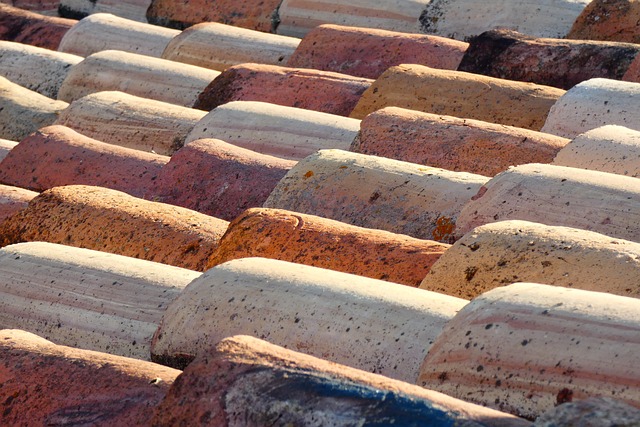Winter storms pose significant risks to roofs, demanding meticulous winter roof maintenance to prevent costly repairs. Regular inspections using tools like binoculars and flashlights identify issues like missing shingles, water leaks, and damaged gutters. Post-storm assessments focus on wear and tear, while annual maintenance involves clearing gutters, sealing cracks, and ensuring insulation for long-term protection against harsh winter conditions.
After harsh winter storms, it’s crucial to inspect your roof for damage or wear. This comprehensive guide walks you through understanding common winter storm damage, essential tools for a thorough roof inspection, identifying signs of wear and tear, and necessary repairs and maintenance. Learn seasonal tips for long-term protection to ensure your roof stands strong against future storms, promoting optimal winter roof maintenance.
Understanding Common Winter Storm Damage
Winter storms can leave a trail of damage, and understanding common issues is key to effective winter roof maintenance. From heavy snowfall accumulating on rooftops to freezing temperatures causing structural stress, various factors contribute to wear and tear. One significant concern is ice damming, where snow buildup along the edges melts and refreezes, leading to water infiltration and potential ceiling leaks.
Regular inspection should also account for wind damage, such as missing or damaged shingles, which can expose interior spaces to the elements. Additionally, intense storms often cause tree branches to fall, posing a risk of impact damage to roofs. Being aware of these potential issues equips homeowners with the knowledge to implement timely winter roof maintenance practices and prevent more severe, costly repairs in the long run.
Essential Tools for Roof Inspection
When inspecting your roof for damage after a harsh winter storm, having the right tools is crucial for effective winter roof maintenance. Essential tools include a set of binoculars or a ladder to reach higher areas, a flashlight to examine darker spots, and a detailed inspection checklist. Binoculars allow you to spot small issues from a distance while a ladder provides access to hard-to-reach areas where damage may accumulate. A flashlight is invaluable for examining the roof under low light conditions, as winter storms often occur during early morning or late evening hours.
Additionally, a thorough inspection checklist helps ensure nothing is overlooked. Look for missing shingles, damaged gutters, and signs of water leaks. Check for loose or broken flashing around chimneys and vents, as well as any cracks or splits in the roof underlayment. Regular maintenance using these tools and checks can prevent minor issues from becoming costly repairs, ensuring your home remains protected against future winter storms.
Identifying Signs of Wear and Tear
After a harsh winter, it’s crucial to perform thorough inspections for damage or wear on your property, especially focusing on the roof. Winter roof maintenance is essential to prevent costly repairs and ensure your home’s integrity. Keep an eye out for signs of wear and tear, such as missing or damaged shingles, leaks, or loose flashing. These issues can often be spotted during a close examination of the exterior.
Regular checks should also include looking for sagging or uneven roofs, which could indicate structural damage caused by heavy snow or ice. Additionally, assess if there are any visible cracks in the roof tiles or metal panels. Even minor wear can compromise the roof’s effectiveness in protecting your home from future storms, so addressing these issues promptly is vital for long-term winter roof maintenance.
Repairs and Maintenance After the Storm
After a harsh winter storm, it’s crucial to perform thorough inspections and repairs to ensure your home’s structural integrity. The first step is to assess any damage, focusing on areas like roofs, gutters, and siding. Winter roof maintenance is essential; inspect for missing shingles, damaged flashing, or leaks. Promptly addressing these issues prevents further complications.
Regular winter roof maintenance includes clearing gutters of debris to avoid water accumulation and potential flooding. Check for weak or broken spots in the siding, as well as any signs of mold or rot. Addressing these issues early not only ensures your home’s safety but also protects against costly repairs down the line.
Seasonal Tips for Long-Term Protection
As the harsh winter storms subside, it’s crucial to inspect your property for damage or wear and implement long-term protection strategies for a robust and secure future. Winter roof maintenance tops the list of essential seasonal tasks. Begin by assessing the condition of your roof, looking out for missing or damaged shingles, leaks, or structural weaknesses. Addressing these issues promptly not only ensures the integrity of your home but also prevents more severe damage and costly repairs in the long run.
For optimal winter roof maintenance, consider a comprehensive approach that includes cleaning gutters to prevent water buildup and potential flooding, inspecting and sealing any cracks or gaps in the roof structure, and ensuring proper insulation to ward off cold drafts. Additionally, apply a coat of high-quality waterproof sealant to enhance protection against freezing temperatures and heavy snowfall. These proactive measures will safeguard your roof—and your home—against the rigors of winter, promoting longevity and preserving its value.
After navigating through harsh winter storms, it’s crucial to inspect your roof for damage or wear. By understanding common winter storm damage and employing essential tools, you can identify signs of wear and tear promptly. Regular repairs and maintenance post-storm are key to ensuring long-term protection for your roof. Implement seasonal tips for a robust winter roof maintenance routine to safeguard your home against future storms.
